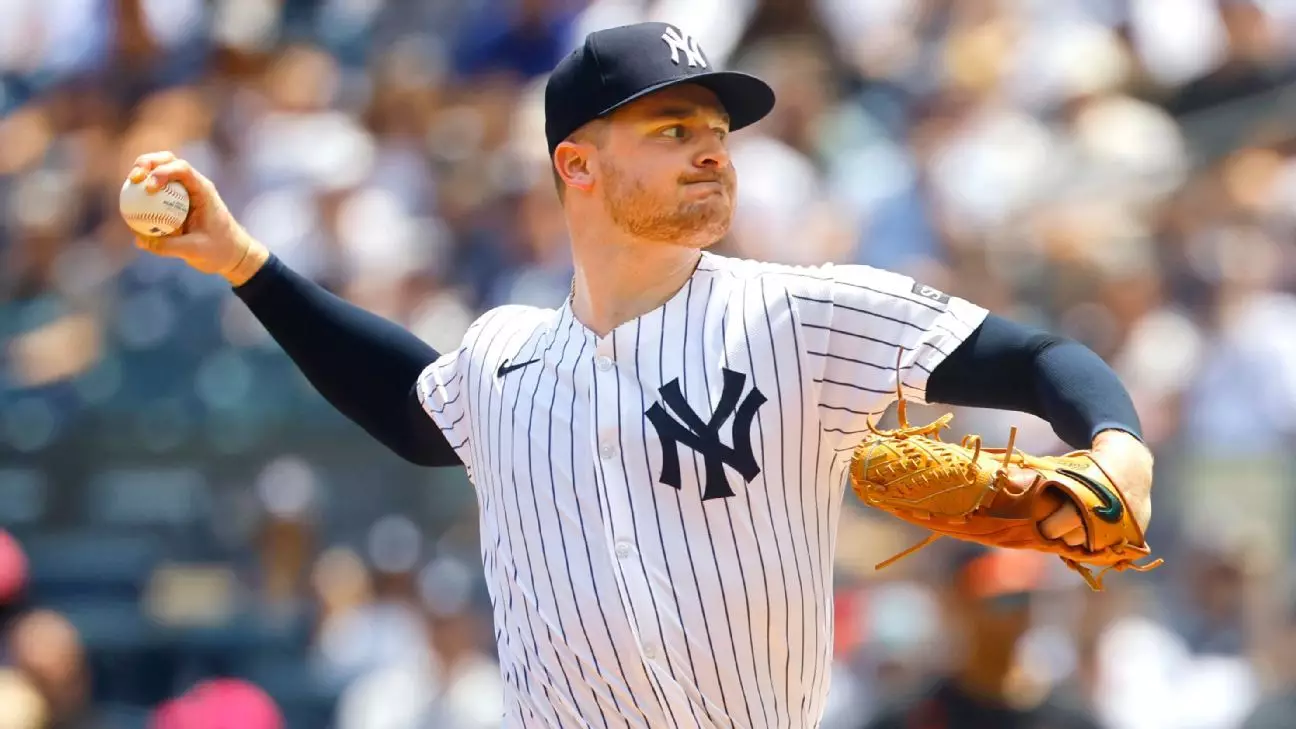The recent announcement that Clarke Schmidt is likely to undergo Tommy John surgery marks a pivotal moment for the New York Yankees’ pitching staff. This news doesn’t just signify a setback for one promising pitcher; it underscores the fragility of the Yankees’ current rotation amidst an ongoing injury crisis. Schmidt’s injury, confirmed through MRI results revealing a torn ulnar collateral ligament, compounds the Yankees’ pitching woes — a team that has already seen its ace, Gerrit Cole, sidelined by Tommy John just months earlier. The timing couldn’t be worse, given that the team is racing against the clock to bolster their rotation before the trade deadline.
Schmidt’s performance this season indicated a resurgence, with an impressive 3.32 ERA across 14 starts. His emergence as a reliable arm injected some much-needed stability into a rotation plagued with injuries. Yet, his sudden setback highlights the brutal reality of pitching at the highest level, where even minor elbow discomfort can escalate into career-threatening injuries. The Yankees now face an uphill battle, tasked with filling a sizeable void in their rotation just as their prospects for replacement are limited and uncertain.
The injury’s implications stretch beyond Schmidt’s personal career trajectory; it exposes the Yankees’ vulnerability at a critical juncture of the season. They must evaluate internal options like Carlos Carrasco, Allan Winans, and prospect Cam Schlittler — none of whom have established themselves as frontline starters — or look outward for reinforcements. This scenario lays bare the challenge of building a resilient, deep pitching staff capable of enduring the perils of a long, physically taxing season.
Assessing the Yankees’ Response: Internal Solutions and Market Strategies
In light of Schmidt’s injury, the Yankees’ management faces urgent questions regarding their strategic approach to restoring their starting rotation. Internally, coach Aaron Boone has some options, but none seem fully equipped to absorb Schmidt’s absence seamlessly. Carrasco and Winans are familiar options, yet neither has demonstrated the consistency needed for a sustained rotation role. The promotion of Cam Schlittler from Double-A is a developmental move, but expecting him to immediately fill a major league spot could be a gamble given his limited experience.
Moreover, the Yankees’ decision to keep JT Brubaker as a long reliever indicates a reliance on experience rather than depth. From a broader perspective, the team must seriously consider the trade market if they hope to fill the void with a competent arm before the July 31 deadline. The need for a reliable, innings-eating starter is paramount, especially as their current rotation lacks proven durability.
This situation raises critical questions about the Yankees’ long-term approach to pitcher health management and roster depth. Relying heavily on young prospects and internal options without drafting for durability can backfire in seasons like this, where injuries mount and patience wears thin among fans and management alike. The Yankees must strike a delicate balance: investing in proven veterans or acquiring promising talents from trade avenues to reinforce a rotation that is exceedingly thin and fragile.
Looking Ahead: The Crucial Role of Market Acquisitions and Player Development
As the trade deadline approaches, the Yankees’ strategy will heavily depend on their ability to identify and acquire a dependable starter. The market offers several options, but the team will need to act quickly and decisively. Thrust into a corner, they cannot afford to gamble solely on internal prospects, whose development phases have yet to mature. High-impact acquisitions could be pivotal in(s) stabilizing the rotation and alleviating some of the pressure on their remaining pitchers.
Simultaneously, the injury crisis underscores the importance of comprehensive player health management. The Yankees could benefit from reviewing their conditioning programs and injury prevention strategies. Pitchers are pushed to their physical limits, especially considering the increasing workload and emphasis on velocity and strikeouts. Developing sustainable practices and monitoring player health more meticulously could mitigate future risks.
Ultimately, the season’s trajectory hinges on the Yankees’ ability to adapt quickly. Schmidt’s injury is a harsh reminder of how unpredictable baseball can be, exposing vulnerabilities that demand both immediate fixes and long-term solutions. The Yankees must view this challenge not merely as a crisis, but as an opportunity to recalibrate their roster construction, prioritize player health, and emerge strengthened for the battles ahead.

